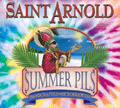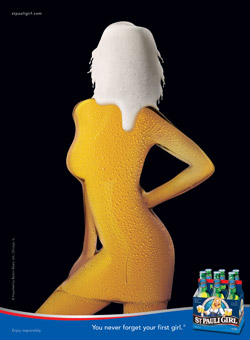You might have heard that Port Brewing, which operates three brewery pubs in Southern California, acquired the former Stone Brewing facility in San Marcos. Now it’s time to find out what that means.
Tomme Arthur, who oversees brewing operations for Port Brewing, provided some answers just before heading off to Belgium with four other American craft brewers.
Arthur created some of the most sought after American craft beers of the young 21st century – an extraordinary range that includes Cuvee de Tomme, the ultra-hoppy Hop 15, saisons with a distinctive American twist and many others – but most have been served only at the Solano Beach facility where they were made or a few special beer events around the country.
Now they’ll be available to a much wider audience – although you won’t see them in your local grocery store soon – and a conversation with Arthur makes it obvious that he’ll have a lot more exciting news in the coming months.
Tell us about the company that bought the former Stone brewery.
TA: A new entity known as Port Brewing LLC. The goal of our new operation is to translate many of the fabulous beers that we as “Pizza Port” have been releasing and take them to a wider audience. We will also be building a new brand known as Lost Abbey as part of our operation.
What’s the system size and yearly capacity?
TA: The system is the former Stone Brewing 30-barrel brewhouse. It came with two 30-barrel fermenters, one 90-barrel fermenter and one 120-barrel fermenter. Total annual output through these tanks alone makes over 5000 barrels possible. This number is subject to change based on fermentation profiles of beers we are contemplating. We also have made a major investment in oak, which we believe will allow us to produce no less than 6 beers per year from these barrels.
How much oak?
TA: We now own 94 oak barrels, both bourbon and French Oak wine barrels.
We have already filled 6 bourbon barrels, and the first beer will spend 6 months breathing in the bourbon before being released later this year.
These wine barrels will be filled with all kinds of critters and fun bugs in the coming months. Some of the Cuvee de Tomme will find a home in these barrels (to offset some of the major bourbon flavor of the new oak blended at bottling time). We will also be releasing a new version of the Le Woody (the blonde version) as well as the Le Woody Brune, which will have a name change and slight recipe variation – different cherries.
We are making a major commitment to barrel aging and look to have six beers available in from wood after about 18 months of being up and running. Two (beers) will be strictly from bourbon barrels, one will be a blend (Cuvee) and three will be from the (bug-ladden) French Oak. All will be bottled. One will be brewed under Port Brewing brand and the other five will all be Lost Abbey beers.
What will be available beyond draft beer?
TA: As part of our expansion we have signed up with Stone Distributing, who will be handling our Southern California Distribution. The first cases of Sharkbite Red have already started hitting stores. This will be the only 6-pack from Port Brewing for now. We anticipate releasing a second beer in 12 ounce-bottles, but will let the market dictate what that release will be.
Our focus for bottling will be on larger format bottles. Most of the Pizza Port beers will be bottled and labeled under Port Brewing and sold in 22-ounce bottles. We hopes to have the first ready by early April. Beers like Shark Attack, Hop 15, Santa’s Little Helper and even new beers from Jeff Bagby (brewer for the Carlsbad pub) like Hop Suey may get a shot at hitting some glass in the not-so-distant future.
For the Lost Abbey, we will use a hood and wire unit. Like Russian River, Allagash and Unibroue we will be bottling in 750ml brown bottles imported into the states. All of the bottled Lost Abbey beers will be bottle conditioned with live yeast. The barrel-aged beers will most likely follow the Russian River beers into the market in 375ml glass. It is quite possible that limited runs of larger bottles may happen as well although, but we have not purchased a corker to do bottles larger than 1.5 liters.
What beers/brands that will be distributed?
TA: Port Brewing Co will be making Sharkbite Red Ale, Wipeout IPA and Amigo Lager for draft distribution. Only the red will be bottled. Seasonal beers will follow when possible.
On the Lost Abbey side, we envision four beers available in 750ml cork finished bottles. The first is Avant Garde.
I love the name of this one for many reasons. The dictionary definition:
A group active in the invention and application of new techniques in a given field, especially in the arts.
Of, relating to, or being part of an innovative group, especially one in the arts: avant-garde painters; an avant-garde theater piece.
This name just resonates what we will be about – finding ways to stay ahead of the curve and at the forefront of expression. The beer will be brewed in a quasi biere de garde fashion. In many ways, we expect it will be a table beer.
It will be brewed to about 6% abv with a lager yeast at ale fermentation temperatures. We will also be custom roasting some of the malt using the restaurant pizza ovens (yummy garlic). We brewed a pilot batch in Solana Beach and can’t wait to make it on a larger scale. The beer will sport a burnt blonde color with notes of freshly baked bread and a certain fruitiness from the yeast combined with Brewers Gold hops and Spalt from the French countryside.
As a brewer, what will you be able to do that you haven’t before?
TA: Not bump my head on the cellar in the brewery for starters. . . .
Then, we hope to stop having to apologize as we have in the past that many of these great beers aren’t available outside of San Diego. Honestly I am most excited about working on the barrel program and developing the Cuvee on a larger scale as well as other barrel-aged beers that weren’t possible in the past. The packaging of many of these “elusive” beers will enable us to be in more places than in the past. We are looking at opening up new states and distribution agreements in the next few years.
Since this deal went public online, we have been flooded with calls from people wanting our beers. While this feels great, we know that we have to take care of our backyard first before we head east.
Where will your beer be distributed?
TA: Initially only in Southern California to begin with. Arizona and Northern California would be next. We hope to have some beer on the East Coast in Philly and DC before the end of 2006.

 Saint Arnold Summer Pils from the Houston brewery of the same name. The Bohemian-style pilsner tends to sell out quickly, and was long gone by the time it captured silver at the 2005 Great American Beer Festival. Teh Pils has been a labor of love from the start for Saint Arnold founder Brock Wagner. Back in 1998 he noted:
Saint Arnold Summer Pils from the Houston brewery of the same name. The Bohemian-style pilsner tends to sell out quickly, and was long gone by the time it captured silver at the 2005 Great American Beer Festival. Teh Pils has been a labor of love from the start for Saint Arnold founder Brock Wagner. Back in 1998 he noted: The St. Pauli girl has a different look in a new advertising campaign for the German beer.
The St. Pauli girl has a different look in a new advertising campaign for the German beer. The best known mix is a Black and Tan or Half-and-Half, and whether these are the same or different depends on where you order them. With since everybody is thinking about St. Patrick’s Day on Friday, it seems like a good time to review the basics:
The best known mix is a Black and Tan or Half-and-Half, and whether these are the same or different depends on where you order them. With since everybody is thinking about St. Patrick’s Day on Friday, it seems like a good time to review the basics: